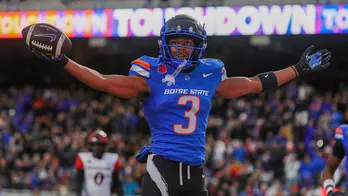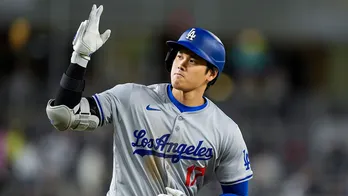Will take a break from politics while AIFF president: Kalyan Chaubey
“Haven’t got enough of it recently,” Kalyan Chaubey had replied when asked if he had slept well after a red-eye to Doha. Waiting to be taken to FIFA president Gianni Infantino, Chaubey, in jacket and tie, had blended with football’s men in formals in the lobby of the swank hotel earlier this month. On Sunday, in white kurta-pyjama, he was the BJP North Kolkata unit president squeezing in a working lunch at home with party members between finishing media engagements and meeting football officials.  PREMIUM
PREMIUM
That’s going to change. “I will be taking a break from political responsibilities soon,” said Chaubey. The new president of the All India Football Federation (AIFF) will focus on being just that because “I cannot balance both.” Handing over charge will take the next few months and from early 2023, Chaubey said he would take a break from active politics.
“As AIFF president, it will not be fair to represent a political party because it may come in the way of developing football especially in states where a different party is in power,” he said.
That will be a first in AIFF led by career politicians since 1988. It wasn’t the only one he listed in his home office which has a wall dedicated to frames of Chaubey, a former Tata Football Academy (TFA) cadet who played for a clutch of top clubs including Mohun Bagan and East Bengal, as a player, with politicians, Nobel laureate Kailash Satyarthi and David Moyes among others.
A nationwide under-21 league for men, no foreign players in lower leagues and getting AIFF to commit to a long-term plan of involving 1.8 million children to play football were the others. Along with these came the assurance that the Union government would increase its current grant of ₹5 crore, slashed from ₹30 crore in 2019-20, and that AIFF would revive a plan to help state associations by paying for one technical officer and an administrative officer.
AIFF has youth leagues for under-13, under-15 and under-18 boys but “a footballer who is 18 years old isn’t often strong enough to compete in the senior team.” Having an under-21 league will help bridge that gap and make it “easier to get a pool of player for the India under-23 team,” he said.
“We will have to see whether this would be part of the I-League or an India-wide district league. We have over 700 districts in India. Let's say, 70 take this seriously and you have 30 players in each of those districts. That’s 2,100 under-21 players.”
If AIFF can get affiliates to agree to not allowing foreigners in lower divisions of their leagues, these players could get regular game time, he said. In 2002, Chaubey said he had cleared trials at a club in Karlsruhe but was denied a work permit because Germany, after the disastrous 1998 World Cup and Euros 2000, had barred foreigners in its lower leagues. “Some harsh decisions need to be taken but it has to be agreed to by AIFF because working as a team is what football teaches you,” he said.
Increasing the pool of players is a goal Chaubey is keen on, “not talk about when we will play the World Cup or academies where 25-30 can be trained.” He sounded enthusiastic about a plan to get 1.8 million children to learn football in schools. The number, he said, has been arrived at by a back-of-the-envelope calculation.
FIFA will give India one million footballs which will be distributed among 10,000 schools. “Children from classes 1 to 6 will be trained using these footballs. Let’s assume 30 students from each class are interested. So each school will have 180 students playing, taking the total count to 1.8 million.
“These schools have a PE teacher meaning you don’t have to hire a coach. AIFF can have a seven-day training programme for those teachers, maybe help them get D or E coaching badges of AIFF. This way, there will be a uniform way of training boys and girls across India.”
The plan, a Union government initiative, would be implemented by the AIFF, state associations and the state governments, said Chaubey. “I will meet armed forces representatives (in Kolkata for the Durand Cup) and ask how they can support this. This is a long-term plan but unless you have a vision that spans 10-15 years, you cannot bring a change in a country like India.”
Pointed out that a similar initiative during the under-17 men’s World Cup didn’t take off, Chaubey said that might have been because “everybody was not on the same page. We will try to ensure that won’t happen now.”
Getting help from governments, at the centre and states, is vital, said Chaubey. Holding under-17 women’s games at 30 centres across India, each involving six teams, is a start. That will spur the conversation around the under-17 World Cup. This plan to promote the World Cup was agreed in 48 hours following a meeting with Union sports minister Anurag Thakur, he said. “This shows what is possible if a sports federation is connected with the government. AIFF will be in constant touch with the union and state governments.”
Experience unrestricted digital access with HT Premium
Explore amazing offers on HT + Economist Start 14 Days Free Trial Already Subscribed? Sign In
Disclaimer: The copyright of this article belongs to the original author. Reposting this article is solely for the purpose of information dissemination and does not constitute any investment advice. If there is any infringement, please contact us immediately. We will make corrections or deletions as necessary. Thank you.







